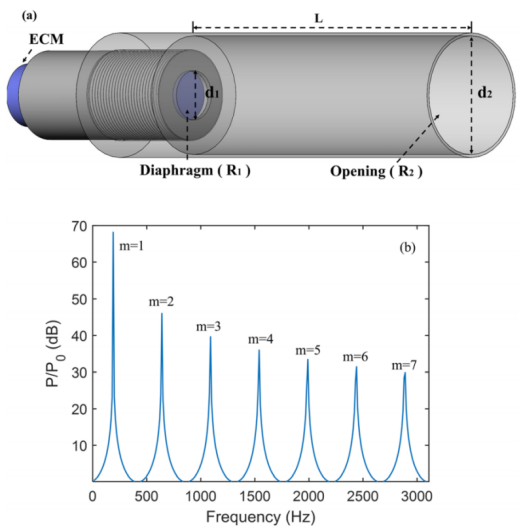Accurate measurement of atmospheric temperature changes in plateau and high-altitude areas is crucial for weather forecasting and meteorological research, helping to understand the atmospheric structure, evaluate climate models, and predict meteorological phenomena.
However, in the field of high-altitude temperature measurement, the air is thin, and both optical non-contact temperature measurement methods and electronic temperature sensors need to first achieve thermal equilibrium with the environment, resulting in data lag.
Acoustic temperature measurement is a rapid non - contact temperature measurement technique. It can avoid the influence of traditional electronic thermometers on the temperature of the object being measured during contact measurement, and can directly measure the air temperature without the need to establish thermal equilibrium, thus reflecting the air temperature in real time.
Traditional acoustic temperature measurement methods rely on precise acoustic equipment and continuous sound source excitation during long - term temperature monitoring. These devices increase the complexity and maintenance cost of temperature measurement, and are prone to interference from environmental noise, resulting in a decrease in the signal - to - noise ratio.
To overcome the shortcomings of the above - mentioned technologies, recently, Yue Yan et al. proposed the passive acoustic temperature measurement technology. It uses environmental white noise instead of external sound sources to measure the atmospheric temperature, and can achieve real - time monitoring of the atmospheric temperature at an altitude of up to 5,200 meters. It has the advantages of being non - contact, accurate in measurement, and rapid in response. Their research results [1] were published in the authoritative journal The Journal of the Acoustical Society of America*in the field of acoustics and served as the cover of the journal.

Journal Cover Image
In the article, researchers proposed a temperature measurement device—the Acoustic Fabry-Perot Resonator (AFPR). Composed of an electret condenser microphone and an acoustic waveguide, the AFPR utilizes ambient white noise to generate acoustic resonance within the device. By detecting resonance frequencies of different orders, air temperature can be deduced. The key lies in the linear relationship between the resonance frequency and the mode order, through which the hidden "clue" to air temperature is obtained.
Additionally, considering the complexity of the actual environment, error compensation and frequency response optimization are performed during practical measurements to improve measurement accuracy.

(a) AFPR Model Diagram (b) AFPR Frequency Response Curve Simulated by Finite Element Method
To verify the performance of the above device, researchers measured air temperature in laboratories, on the ground, and at high altitudes using it.
- Laboratory Measurement: The multi-order resonance characteristics of AFPR were verified through the B&K acoustic system. The slope of linear fitting showed a positive correlation with temperature (R>0.999). In an anechoic chamber, the response time of AFPR to temperature changes was 20 seconds faster than that of an infrared thermometer.
- Surface Measurement in Beijing and Kashgar Plateau: The continuous monitoring results showed that the average deviation from electronic thermometers was <0.8℃. In the Kashgar Plateau, where the diurnal temperature difference reaches 30℃, AFPR can accurately reflect the temperature change trend.
- High-altitude Measurement: A tethered balloon [2] was used to carry AFPR for lifting tests in the Kashgar Plateau (altitude 3,700m) and Hengdian (altitude 120m). The maximum monitoring altitude was 5,200m. The measurement results showed that stable measurement could still be achieved when the ambient noise at high altitudes was ≥35dB, with an average deviation from the thermometer inside the balloon <0.5℃.
References
[1] Yan Yue, Zhi-Mei Qi, Tao Qiao, Junbo Wang, Rong Cai; Passive acoustic measurements of air temperature at various altitudes. J. Acoust. Soc. Am. 1 February 2025; 157 (2): 1290–1301. https://doi.org/10.1121/10.0035794
[2] Tethered balloon: A balloon connected to ground equipment via a cable, filled with a gas lighter than air (such as helium) to generate buoyancy, enabling it to hover in the air.